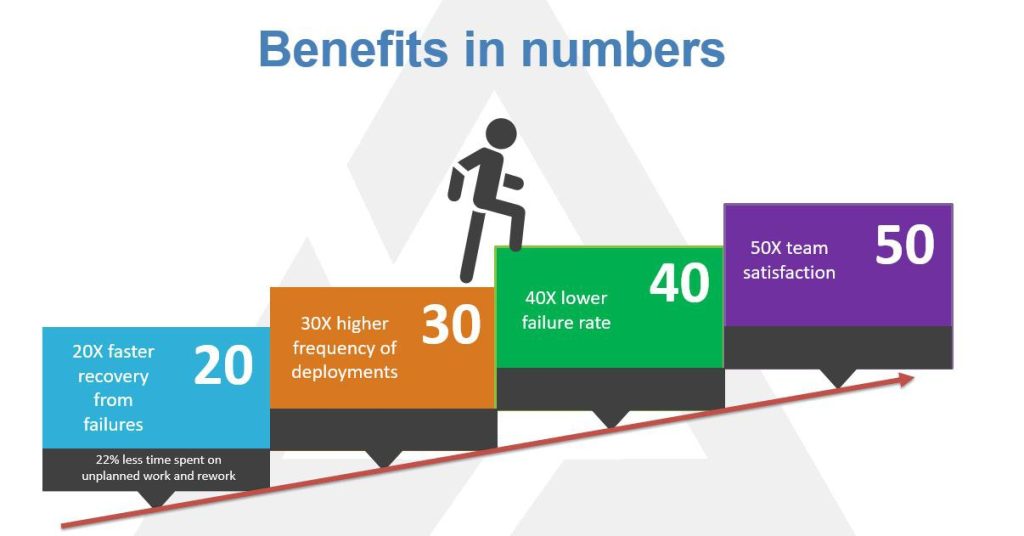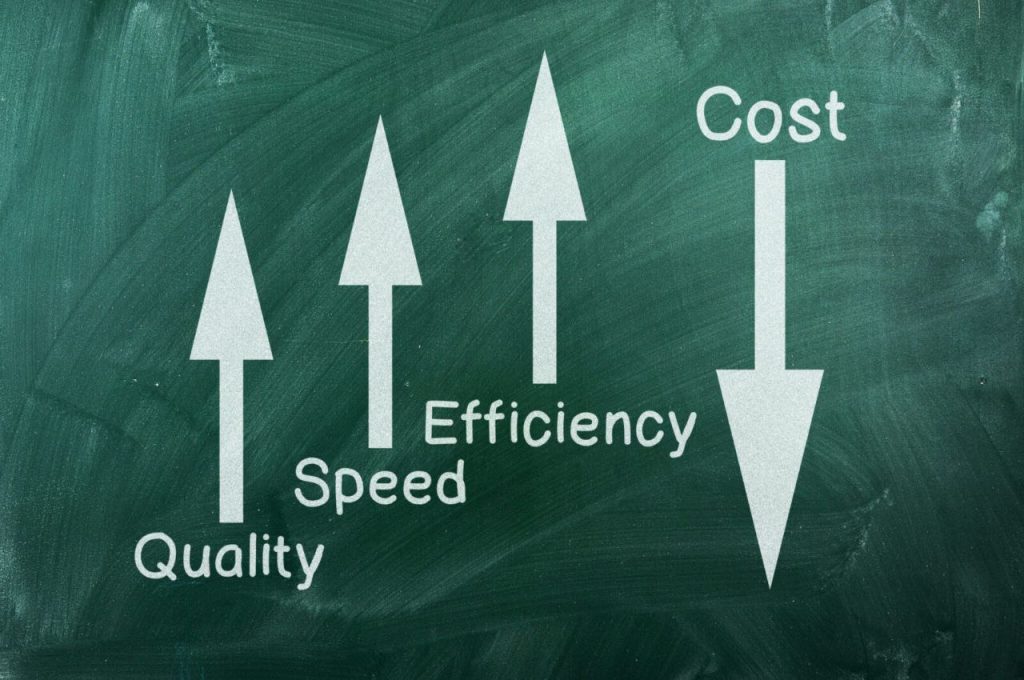DevOps Takes the Sting Out of Old School Mainframe Stresses

Author: Andrew Dvirnyk
For many of us in the business of providing and working with technology solutions, mainframes are the old standbys that we love to hate. Sometimes, mainframes feel like the dinosaurs the next generation of developers and engineers joke that they are. But in truth, with the right solutions, mainframes can run smarter and more efficiently.
But it is not all about cheering the virtues of the mainframes that some still see as a necessary evil in our day-to-day operations. Let’s take a moment to look at how, with the right tools, we can resolve mainframe issues and free up time for our engineers, programmers, and technology managers, to get back to the reasons we all do this work.
Once we solve the common mainframe issues that slow us down, by implementing DevOps, we are able to return to the business of being creative and innovative. We can explore how automation opens up new avenues. And we can do more, better, faster, all while knowing that we no longer need to worry about mainframe issues that threaten to stop us in our tracks and keep us from running our operations smoothly.
What is DevOps?
DevOps is flexible. It taps into the scalability, flexibility, and agility that we most often associate with cloud computing and open source development solutions. With DevOps, therefore, we see that we are able to improve efficiencies in real and important ways that matter not only to the business on a large scale, but to the everyday life of everyone who works with the mainframe.
First and foremost, DevOps enables us to meet one of the most common challenges we all face. It helps us to develop software faster. Great, you might be thinking, but I am concerned with how to solve the immediate challenges that I am facing now. While it is interesting to think ahead, you may be saying, I just need to get through my day.
This is an excellent point, and a challenge that we help our clients face. Even though it is part of our ethos as programmers and engineers, to think ahead to future solutions, we are here to help you solve problems now, so we can all free up space to design the future together.
That is why it is time to look at how DevOps makes every day more efficient and more productive. Simply put, DevOps makes it possible to deploy updates faster. And, solving one of the most common issues that threatens productivity (and frustrates us all!), DevOps also makes it possible to dispatch fixes faster.
Better, Stronger, Faster
In many ways, DevOps implementation moves mainframes out of the old idea that they are rigid, slow, and laborious to maintain and manage. The new era DevOps brings all of our cloud knowledge, open source creativity, and automation power, to resolve mainframe issues. DevOps enables us to have more reliable mainframes.
And it makes those mainframes easier to service. At the same time, and this is important for all of us, DevOps also allows us to provide on-demand solutions. One of the chief complaints about mainframes is that they are harbingers of the old era. Now, our technology world is defined by smart solutions that allow us to deploy creative, flexible solutions in near real-time.

These are the kinds of solutions that we can all get excited about. And, taken together, we have found one approach (DevOps) that allows us to be better, faster, and stronger. All the while, we are decreasing costs over time, and increasing efficiencies almost immediately.
Let’s take a deeper dive into the specifics of how DevOps really is stronger, better, and faster. And what that means for your business on the day-to-day, and as you continue to grow.
Move Beyond Manual Operations
We all know (too well) how taxing manual operations can be. In our new world of innovation and efficiency, there is little room for the manual operations that slow us down. And, frankly, bore us, and prevent us from flexing our muscle as developers and engineers.
So, what does DevOps do to help us move beyond manual operations? It frees us up from having to do manual code building to resolve mainframe issues or enable new solutions. It allows for environment setups that make it easier to do what you need, more quickly, and to customize responses, outputs, and solutions.
Further, moving beyond manual operations allows for the installation of a new level of code. All of that, clearly, benefits those of us who work with mainframes day-to-day. It also improves the functionality of the mainframe, and the technology solutions overall. It does this in the immediate, and over time, because of the flexibility that we are now able to access, deploy, and scale. To ensure these kinds of future-forward benefits, DevOps also includes all levels of testing.
Shorten Deployment Cycles
Now, we all understand that if we really want to move into the future, we need to get there faster. We need to start to bring the future to us. That is why one of the chief benefits of DevOps, as we see it, is that is shortens the deployment cycle.
In these cases, we are looking at deployment cycles of one month, or even deployment cycles of one week. That is a major difference from standard expectations without solutions like DevOps.
Improve Control
When it comes to control, we encounter one of the biggest frustrations that we all associate with mainframes. Namely, that, while current sets of programs like SCLMs (Software Configuration and Library Manager) may work, they are not at all integrated with modern technologies.
On the other hand, DevOps solutions focus version control for mainframes that fully integrates with the scope and pace of modern technologies. This means that you can expect more from your mainframe. And it will deliver.
With improved control for mainframes, we see yet another opportunity to increase efficiency, lower costs across the board, and free up time and resources to focus on doing new, better, and more creative work.
Embrace Automation
Whether we are talking about control, troubleshooting, or customization, automation is at the forefront of our minds as we develop and deploy technologies across business platforms. So, of course, when it comes to working with mainframes and providing solutions for improved responses and efficiencies, it is necessary to look at how to bring automation into play. At the same time, that automation must not, for any reason, reduce quality or reliability.

This is where DevOps for mainframes offers additional value. Even with a limited set of automation tools, we know that we are able to deliver more for less cost and in a shorter amount of time. This brings together the overall benefits of DevOps for mainframe, while also introducing automation into a space that has been lacking.
This is where DevOps for mainframes offers additional value. Even with a limited set of automation tools, we know that we are able to deliver more for less cost and in a shorter amount of time. This brings together the overall benefits of DevOps for mainframe, while also introducing automation into a space that has been lacking.
Excite the Next Generation
So, it seems that working with a mainframe does not mean that you are in the dinosaur days, after all. Rather, the mainframes that we all have to deal with have become a new landscape of opportunities for creative solutions that make us able to do our jobs, faster, smarter, and better than we once were able to do.
This is good news for our next generation of programmers, engineers, and technology managers. Let’s face it, it’s not easy to attract talent using the promise of working on mainframes! Now, on the other hand, we have simple, smart, future-forward solutions like DevOps, that changes the game. And this helps us to get the next generation excited about taking on the responsibilities and challenges associated with mainframes.
It assures creative programming and engineering talent that there is a place for new ideas and new projects. And it not only acknowledges, but it embraces the open source mentality that the next generation (and certainly some of us “more experienced” older folks) gets excited about. Ideas about flexibility, innovation, and agility do not have to be separate from work with (and work on) mainframes. In fact, it is just the opposite.
In this new context, we are giving the next generation a newly improved canvas to work with and to put their stamp of creativity on. With DevOps, we are giving them the opportunity to experiment with open source tools on mainframe. It is the best of both worlds. And the future is ripe for innovation that brings better functionality, and better experiences to everyone who uses the systems, and to all our businesses.
What’s Next?
In our next article, we are taking a closer look at DevOps from the inside out. We are going into the what, why, and how of the DevOps value as an agile solution, and a smart addition for your business.
Looking ahead, in our series on DevOps and the New Mainframe, we will be taking you behind the scenes, where we will walk you through everything from APIs to zSystems, and talk about the mainframe DevOps lifecycle and what that means for you.
Finally, we wrap up our series with more on how DevOps helps us at IBA bring to life our mission to Co-create a SMART future. A future that, like IBA, is Sustainable, Multi-faceted, Automated, Reliable, and Trusted.